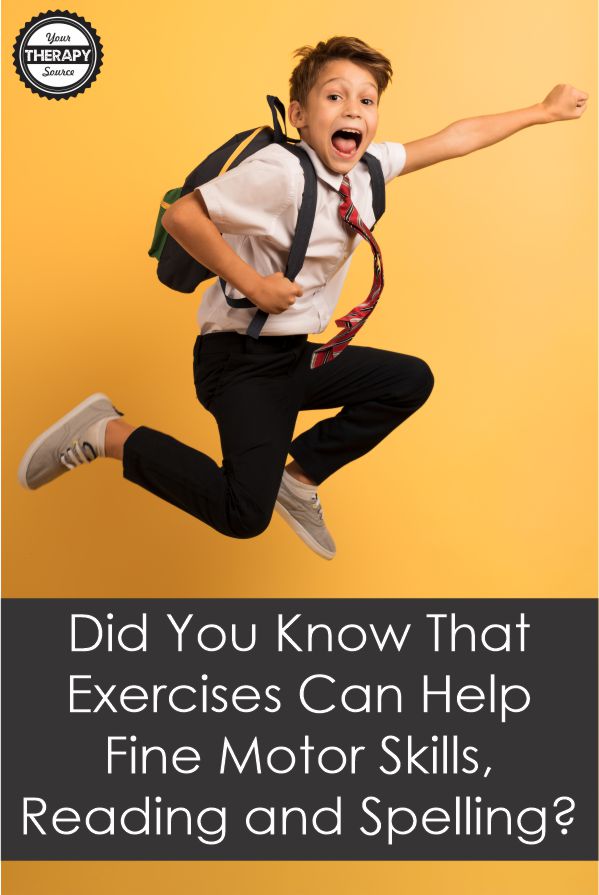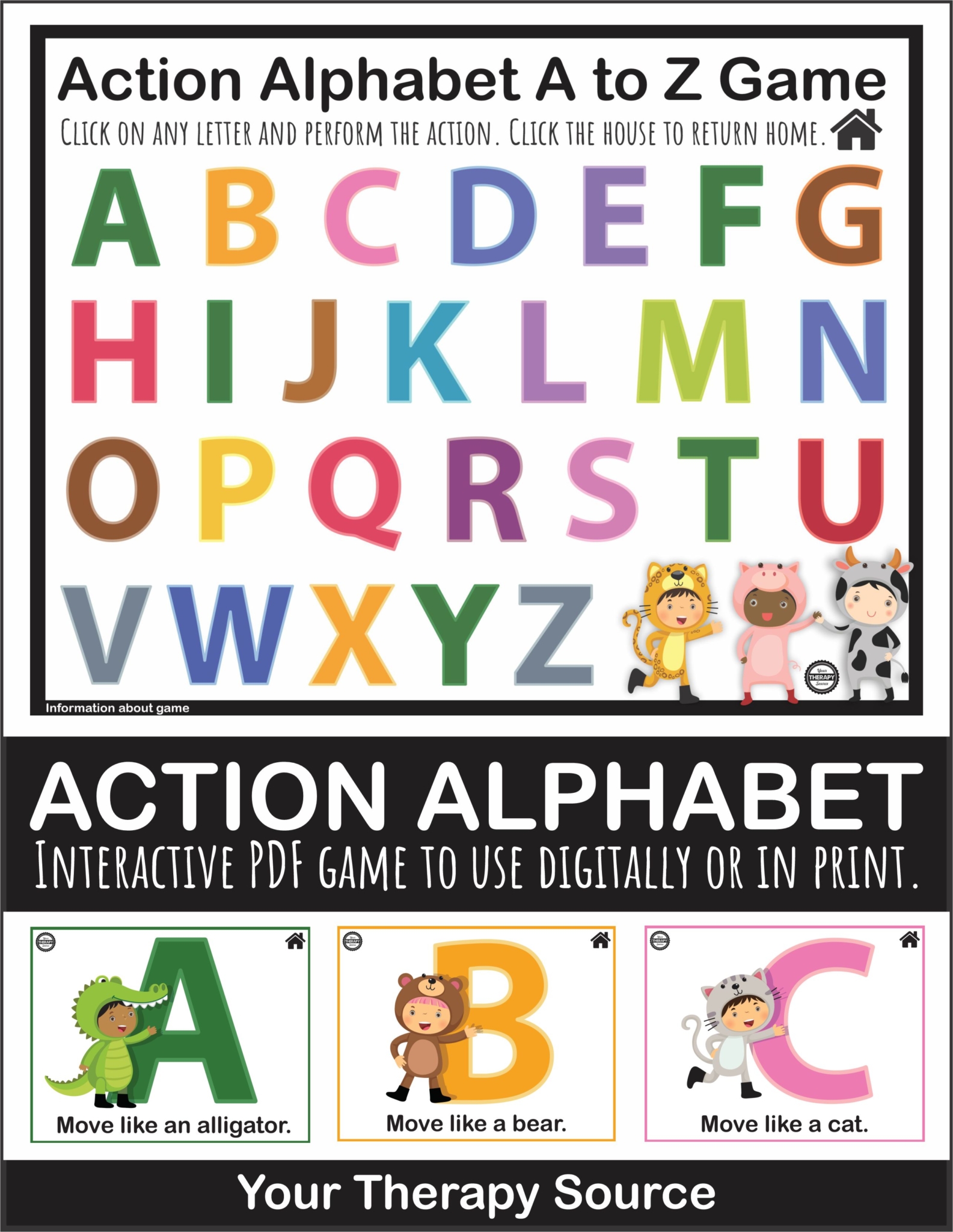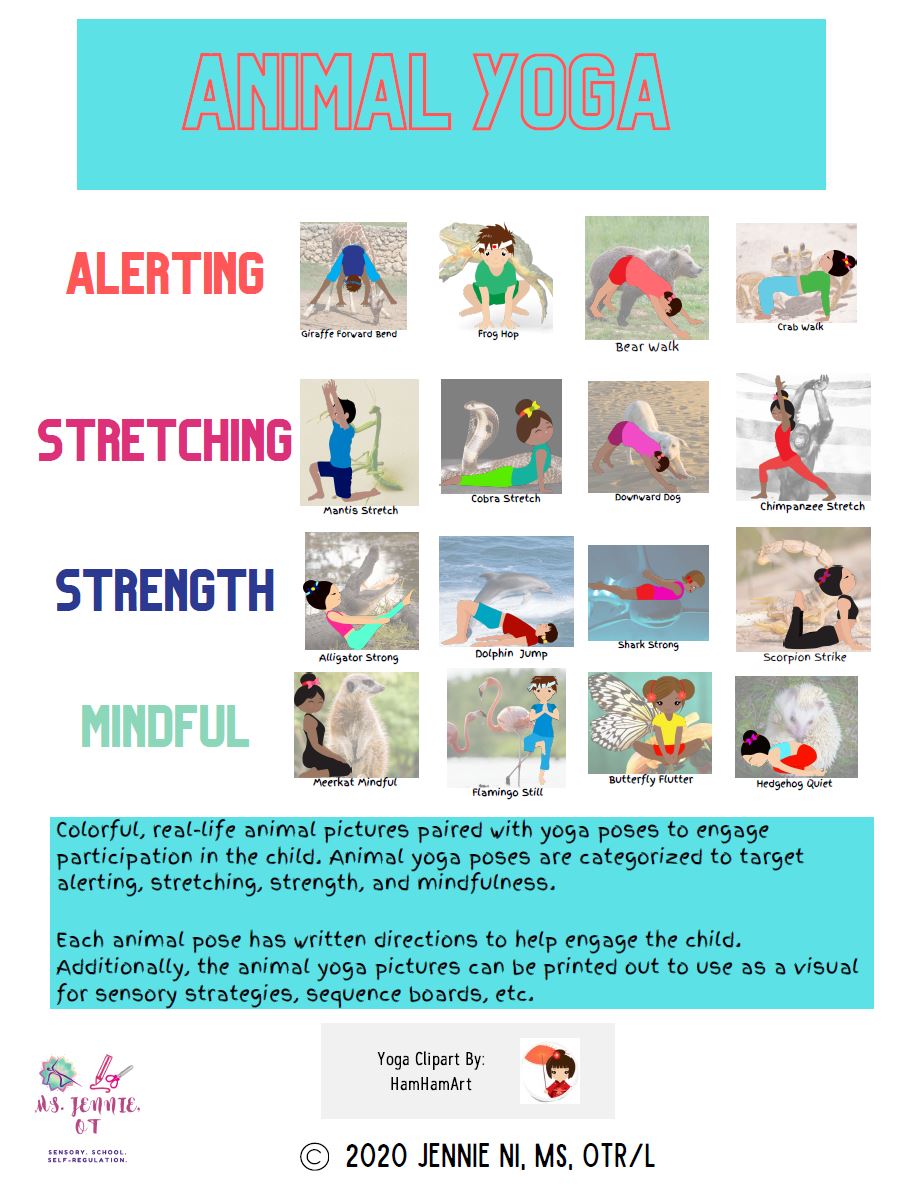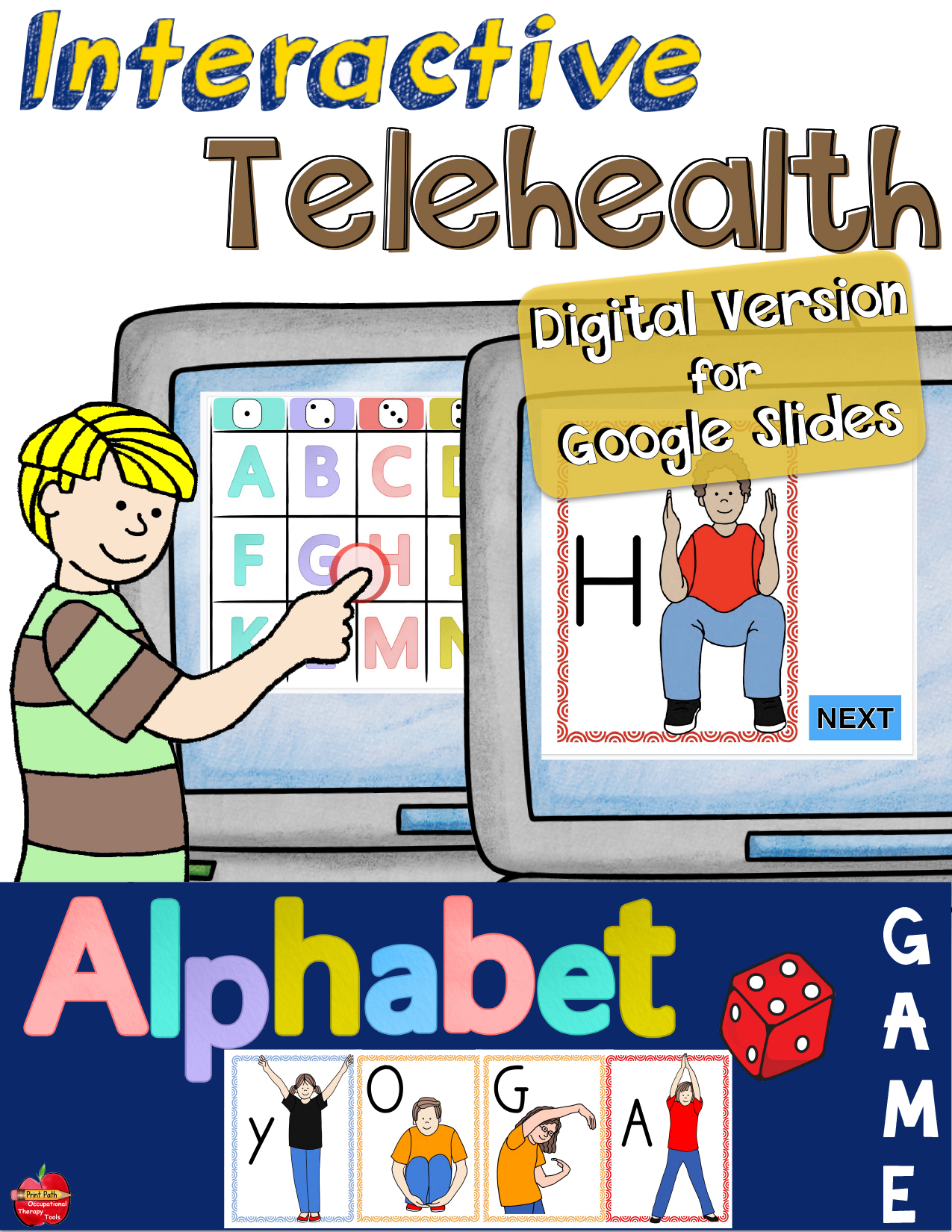Need Help for Spelling? Try Exercising!
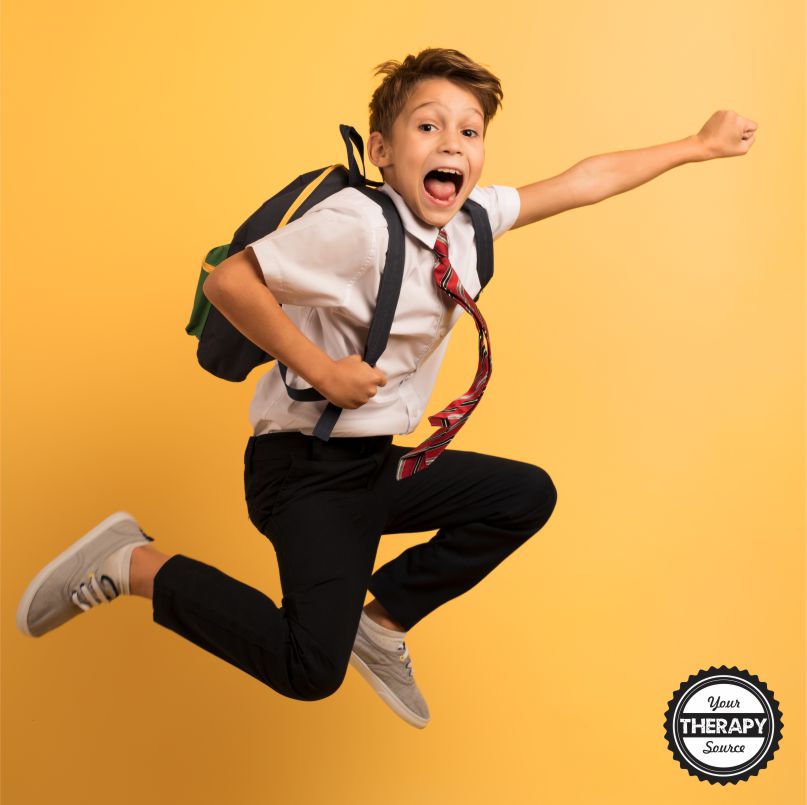
Do your students need help for spelling, reading or fine motor skills? Did you know that gross motor exercises can help fine motor skills, reading, and spelling? Recent research took a close look at motor skills and academics for close to 100 students in the first grade. The researchers wanted to explore how gross motor skills are related to reading and spelling. Movement is essential to learning and this research study helps to back up the idea that by adding movement into your classroom you help your students learn!
Methodology of the Study on Exercises to Help for Spelling and Reading
This study investigated the effect a perceptual-motor intervention on the relationship between gross motor proficiency and letter knowledge in 97 first grade children ages 6-7 years old. Each participant was evaluated for motor proficiency using the Bruininks–Oseretsky Test of Motor Proficiency, Second Edition (BOT-2) and letter knowledge was assessed using the ESSI reading and spelling tests. The students were split between an experimental group and a control group.
The experimental group participated in two 60 minute session perceptual-motor interventions per week for 12 weeks to try and help for spelling, reading and fine motor skills. The interventions consisted of perceptual motor skills incorporated with letters such as:
- body awareness
- spatial awareness
- balance
- visual perception
- directional awareness.
All participants then completed a post test following the intervention.
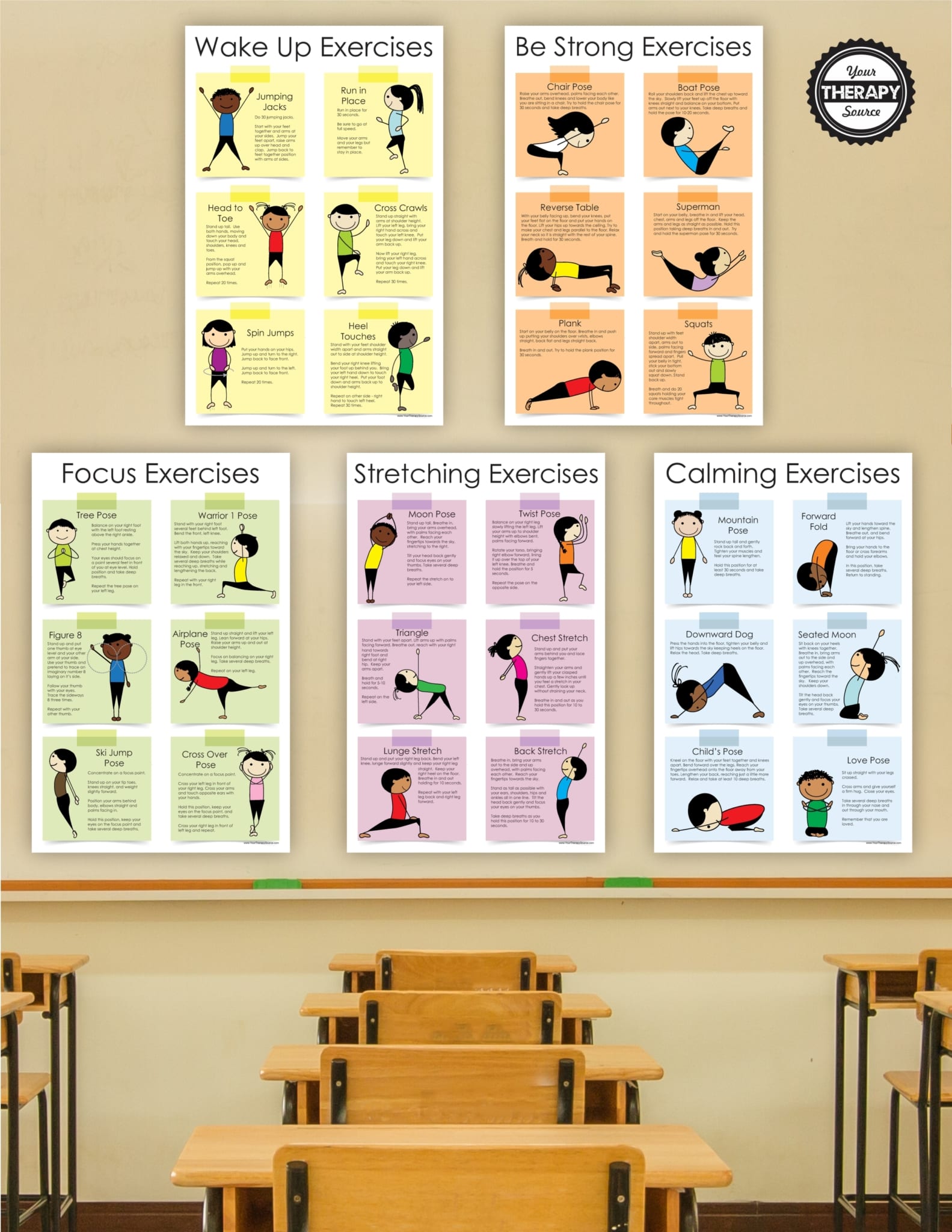
Exercise Posters for Kids – Printed
Results of the Study
Following data analysis on the exercise interventions to help with spelling and reading, the researchers determined the following:
- the perceptual-motor intervention was effective in significantly improving both fine and gross motor proficiency skills.
- the intervention also significantly improved reading and spelling.
- a positive correlation between overall motor proficiency and letter knowledge.
- significant relationships were found between reading, spelling and the following gross motor skills:
- bilateral coordination.
- balance.
- upper-limb coordination.
- the strongest correlation was between motor proficiency and spelling.
In summary, the body awareness, balance, spatial awareness, and visual perceptual exercise sessions significantly improved fine motor skills, gross motor skills, reading and spelling in the first grade students.
The researchers concluded that children’s gross motor development is essential for academic performance and the integration of movement during academic tasks may be an effective way of promoting both gross motor skills and learning abilities in Grade 1 children.
Reference: Botha, S., & Africa, E. K. (2020). The effect of a perceptual-motor intervention on the relationship between motor proficiency and letter knowledge. Early Childhood Education Journal, 1-11.
Movement and Learning Resources for the Classroom
More Ideas to Help with Spelling
Here is a fun movement game to help with spelling. This group activity encourages physical activity, proprioceptive input and spelling practice.
How to Play the Spelling Game
You will need index cards or letter cards. You could use the spelling word list for the week or create your own list.
For our example we will use animals to spell out. Here is the list – bears, snakes, horse, hen and frog. Write one of each letter onto the index cards – i.e. b, e, a, r, s. If you have more than 5 children playing just create duplicate letters until you equal the number of children playing. Repeat for each of the words a separate collections of letter cards.
Hand out the first set of letter cards. For this example we will use bears. When each child gets a letter the leader can announce the mystery word. Ask the children what is the first letter in bears? All the children with the ‘B’ cards should move like a bear to the front of the room. Ask “what is the next letter in bears” Then all the children with ‘E’ cards should move like a bear to the front of the room. Continue until the word is spelled. Have the children move like bears for a bit and then hand out a new set of cards.
Other Action Ideas
You could use the Action Alphabet cards and for each word you are spelling move like the action on the card.
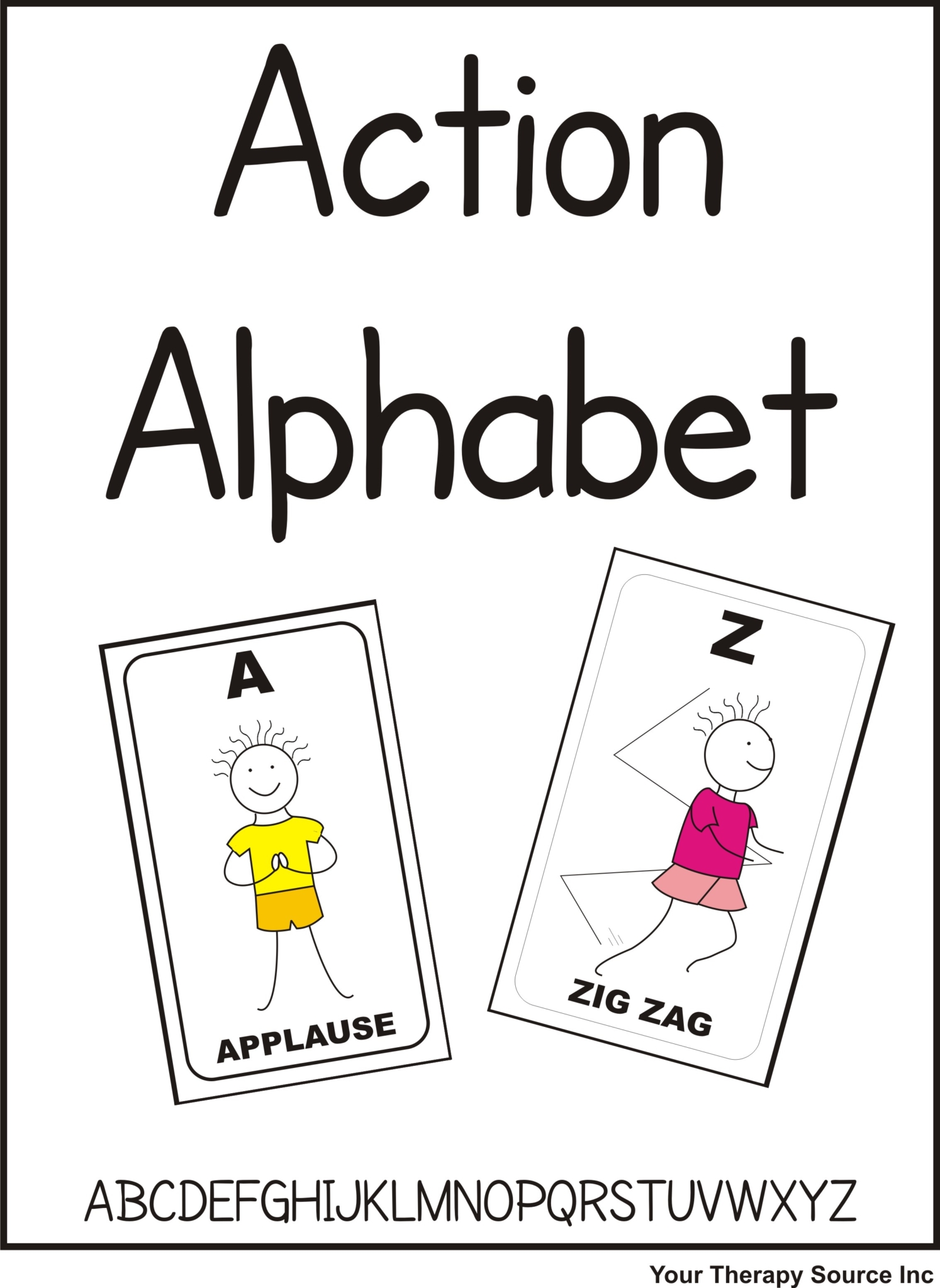
Action Verb Alphabet
Want to make it harder? Hand out the set of cards for one word and give extra children all the same letter (that is not in the spelling word). For example if you have 20 children in the class and the word is “sunshine” hand out each letter in the word (8 cards) plus 12 cards all with the letter ‘D’ on it. Now the children have to move around the room with what ever locomotor action you call out to unscramble the spelling word. All the children with more than one matching letter should exclude themselves from being in the spelling word.
Want to make it easier? Write the spelling word on the board to provide a visual cue to match the letters on the board to the index card. If the children are non-ambulatory, when the child’s letter is called, try movement actions such as raising your right arm, waving your left hand, nodding your head, hitting a switch, etc.
Multisensory Lesson Ideas to Help with Spelling
For elementary school children spelling is an integral part of the curriculum. Here are 5 simple multisensory lessons to help with spelling:
1. Spell the words in the air using different body parts – hands, elbows and feet.
2. Use magnetic letters to spell the words out but put the letters on one side of the room and the magnetic tray on the other side of the room. The students have to move to spell the words.
3. Write the spelling words on a partners back. Can the person guess what you spelled out?
4. Write the words very large on a white board or any vertical surface.
5. March around the room and spell out loud.
